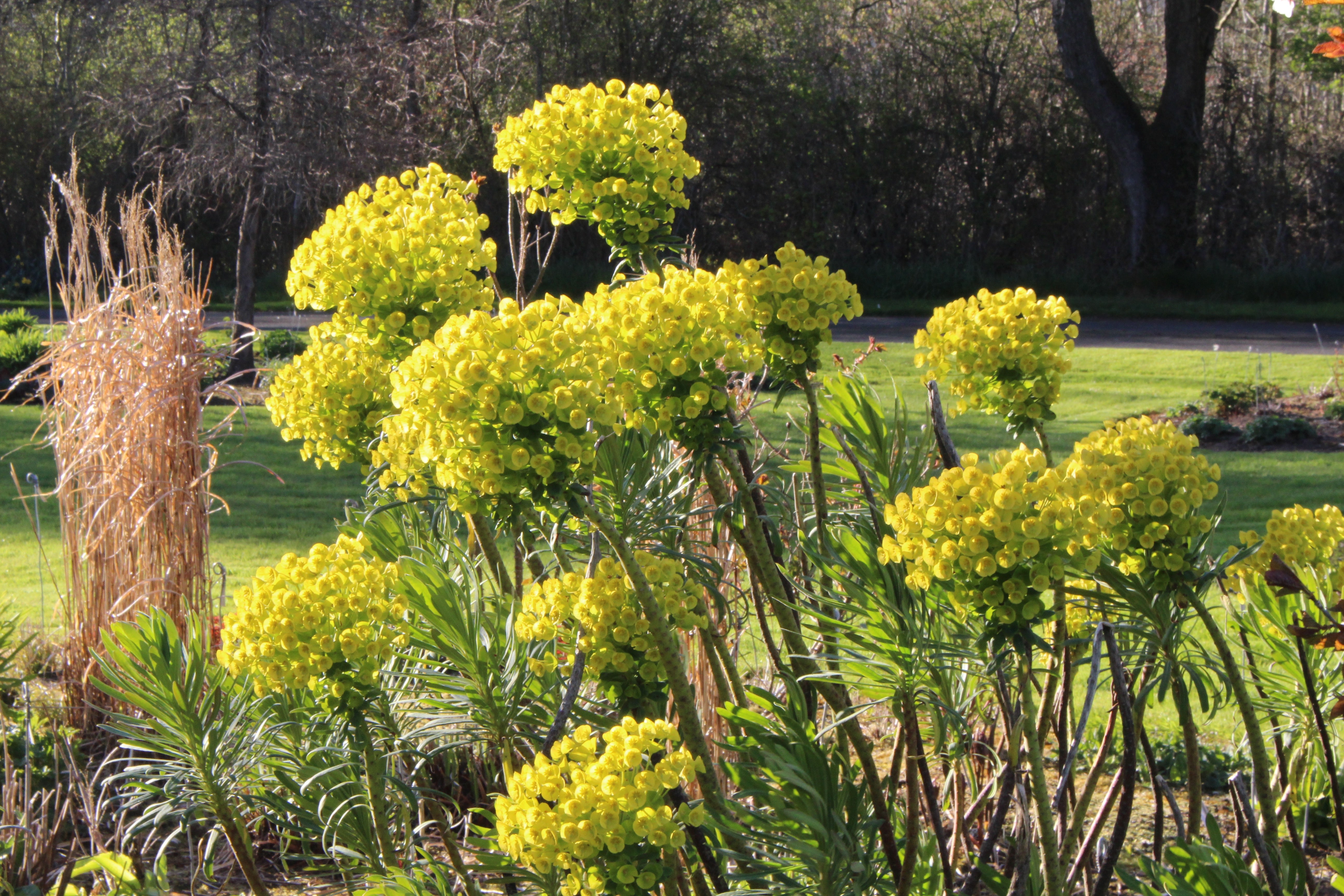Euphorbia characias subsp. wulfenii 'Lambrook Gold'
Approx. 0.5 litre pot
About this cultivar:
Euphorbia characias subsp. wulfenii 'Lambrook Gold' is a substantial, technically evergreen sub-shrub. However is it more likely semi-evergreen, I still think of it as a herbaceous perennial as you can (should?) cut back the old shoots/stems in spring. The leaves are grey-green and the golden-green flowers and bracts are carried in large cylindrical clusters. Presumably this was introduced by the late Margery Fish or at least named after her famous garden in East Lambrook Manor, Somerset.
The species Euphorbia characias is an upright Euphorbia that is native to Southern Europe, the Balkans and Turkey. It typically grows (3-4ft, 90-120 cm) on erect, woody-based, green stems with narrow, linear to obovate, blue-green leaves spirally arranged along the stems. Each stem is topped in spring by a thick, bottlebrush-like inflorescense of greenish-yellow flowers. The flowers lack petals, but have showy, petal-like, greenish-yellow bracts. Watch out! Broken stems exude a white milky sap that is a skin irritant and poisonous.
The subspecies wulfenii differs from the species by growing shorter (to only 2-3 feet/60-90 cm) tall and by having more yellow in the flowers, darker purple on the glands, and larger leaves. Funny tho, this 'Lambrook Gold' wulfenii is taller but the larger, yellower, flowers more spectacular. I don't decide the names...
- Position: Full sun, partial shade
- Soil: Almost any soil, grows well in Ballyrobert
- Flowers: May, June, July, August
- Other features: Grows well in Ballyrobert
- Hardiness: H4 - Hardy through most of the UK (-10 to -5°C), Fully hardy - grows well in Ballyrobert!
- Habit: Clump forming
- Foliage: Evergreen
- Height: 105 - 145 cm (3.5 - 4.5 ft)
- Spread: 75 - 100 cm (2.5 - 3.3 ft)
- Time to full growth: 2 to 5 years
- Plant type: Herbaceous Perennial, shrub
- Colour: Green, yellow
- Goes well with: Iris, Tulipa, Allium, Lupin and with foliage plants such as Cotinus.
About this genus:
Euphorbia (spurge) is a large and diverse genus of over 2000 (!!) species of flowering plants in the spurge family (Euphorbiaceae). The common name "spurge" derives from the Middle English/Old French espurge ("to purge"), due to the use of the plant's sap as a purgative. The botanical name Euphorbia (pronounced "u-for-be-a") derives from Euphorbos, the Greek physician of king Juba II of Numidia (52–50 BC – 23 AD), who married the daughter of Anthony and Cleopatra (imagine those in-laws!). A philosopher-king, Juba was a prolific writer on various subjects, including natural history. In 12 B.C. Juba named this plant after his doctor Euphorbos. In 1753, Botanist and taxonomist Carl Linnaeus assigned the name Euphorbia to the entire genus in the physician's honor! Phew!
Depending on the cultivar, Euphorbia grow almost anywhere that is not too extreme; we have them everywhere in our garden at Ballyrobert. In the garden Euphorbia is prized for its unique flower heads, textural foliage, and wonderful garden structure. Many new perennial Euphorbia cultivars feature leaves that vary from green to yellow to blue-green to powder blue to purple and some are even variegated or splashed with colour. The flowers attract butterflies and all sorts of creepy crawlies; truely a garden essential!
Try them with Iris, Tulipa, Allium, Lupin and with foliage plants such as Cotinus.


